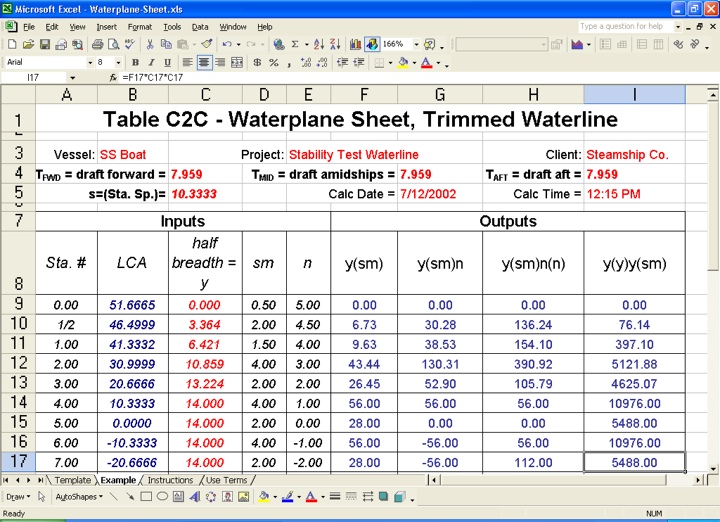Waterplane Sheet (English Units)Description:
For a given input waterline this spreadsheet
computes hydrostatic waterplane area characteristics
relating to station half beam inputs. Basically it sums the
area under a half beam (or waterline) curve to obtain the waterplane area,
it takes moments to obtain the longitudinal center of floatation and
computes moments of inertia in both the transverse and longitudinal
directions. Electronic Document Type: Microsoft Excel spreadsheet Cost: $10.00 US funds Number of Pages: Includes an template (or input) sheet, along with an example sheet, an instructions sheet and a use terms sheet.
Outputs:
Suggested Reading (see References page for more detail on these items):
Terms: Prior to purchase, read our End User License Terms.
Download Now: Click one of the following buttons to pay. After payment you will be taken directly to the download page. Minimum System Requirements: Windows 95/98/NT/2000/XP/Vista/Windows7 Sample: A sample document is shown below.
|

|
Hawaii
Marine Templates 45-302 Makalani Street, Kaneohe, HI, USA 96744-2819 Phone (808) 291-0348 Fax (808) 247-6443 website: www.hawaii-marine.com/templates email: bt@hawaii-marine.com |
 |
Those involved in nautical and professional engineering sectors can benefit from these products. Products are suitable for use by Naval Architects, Marine, Ocean, Nautical, Offshore, Structural, Civil & Mechanical Engineers, Sailors, Ship, Yacht & Boat Designers, Vessel Owners & Operators, Boat Builders, Construction Contractors & others. |

